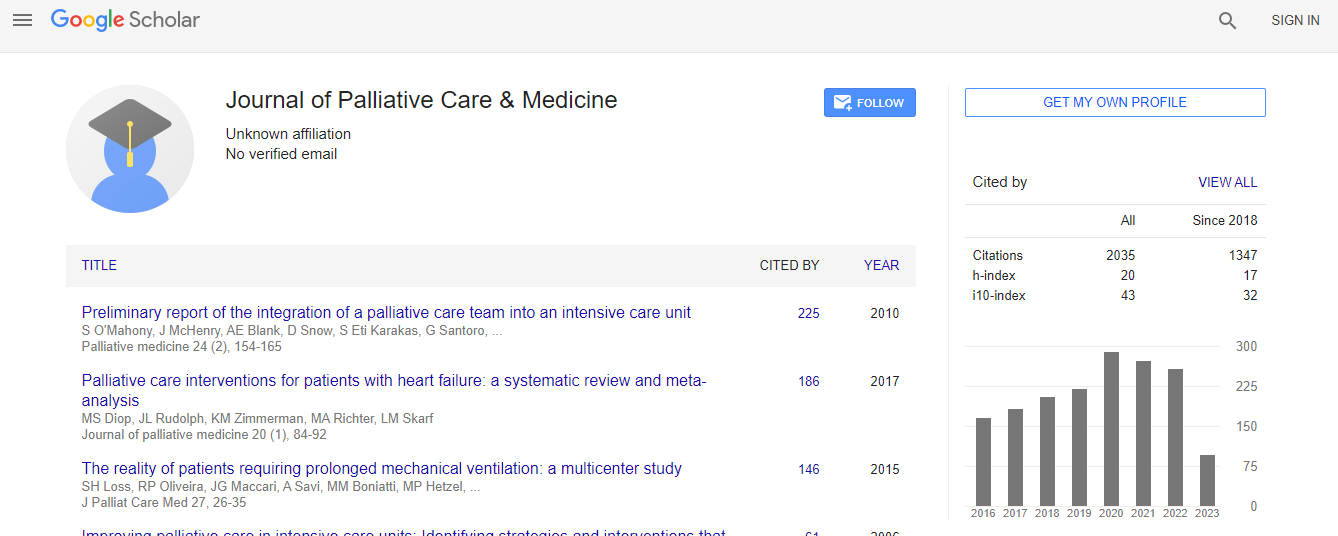Research Letter
The Ramifications of At-Own-Risk Discharges in the Palliative Care Setting
Alvona Zi Hui Loh1, Julia Shi Yu Tan1, Rukshini Puvanendran2, Sumytra Menon1, Ravindran Kanesvaran3 and Lalit Kumar Radha Krishna4*1Yong Loo Lin School of Medicine, National University of Singapore, Singapore
2KK Women’s and Children’s Hospital, Singapore
3Division of Medical Oncology, National Cancer Centre Singapore, Singapore
4Division of Palliative Medicine, National Cancer Centre Singapore, Singapore
- Corresponding Author:
- Krishna LKR
Senior consultant in Division of Palliative Medicine
National Cancer Centre Singapore, Singapore
Tel: +65 6436 8000
Fax: +65 6225 6283
E-mail: lalit.krishna@nccs.com.sg
Received Date: June 17, 2015 Accepted Date: June 30, 2015 Published Date: July 03, 2015
Citation: Loh AZH, Tan JS, Puvanendran R, Menon S, Kanesvaran R, et al. (2015) The Ramifications of At-Own-Risk Discharges in the Palliative Care Setting. J Palliat Care Med 5:224. doi:10.4172/2165-7386.1000224
Copyright: © 2015 Loh AZH, et al. This is an open-access article distributed under the terms of the Creative Commons Attribution License, which permits unrestricted use, distribution, and reproduction in any medium, provided the original author and source are credited.
Abstract
Objective: The Principle of Respect for Autonomy is integral to the patient-physician relationship, yet within a society that prizes the value of life and remains defined by Confucian-inspired concepts of Beneficence, limits to respect for patient choice are increasingly apparent. This is particularly evident in the end-of-life setting and specifically in situations where terminally ill palliative care patients choose to leave health care institutions against medical advice potentially to the detriment of their health. Focusing on "discharges against medical advice" (DAMA), also known as "at own risk" (AOR) discharges within the palliative care inpatients setting, we highlight growing concerns on the AOR discharge process as it is practiced presently.
Methods: We used 3 patient case studies to highlight the various aspects of concern surrounding AOR discharges and its compromise of patient welfare, ostensibly as a result of compliance with the central tenets of the Principle of Autonomy and patient choice. To preserve the interests of the patient we propose the employment of Krishna, Lee and Watkinson’s Welfare Model (WM) which offers a more clinically relevant and ethically sensitive means to decision-making at the end of life within societies still inspired by Confucian beliefs and the Principle of Beneficence.
Results: Based on the WM, AOR discharges in palliative care may be viable if decisions to respect them adopt: (1) a humanistic and holistic approach, (2) patient specific decision-making method, (3) a multidisciplinary medical team approach, (4) clear documentation of the deliberation process, and (5) an evidence-based decision making process that is consistent with regnant professional, social, institutional, and legal standards.
Conclusion: Greater efforts need to be taken to pre-empt AOR discharges where possible among inpatients of palliative care or other medical disciplines. If an AOR discharge is unavoidable, a decision-making process defined by the WM provides the best means of protecting patient welfare and being consistent with prevailing socio-cultural beliefs and values.

 Spanish
Spanish  Chinese
Chinese  Russian
Russian  German
German  French
French  Japanese
Japanese  Portuguese
Portuguese  Hindi
Hindi 
